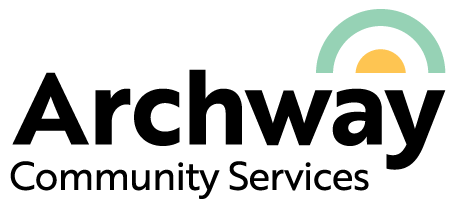Sexual Exploitation Resources for Youth
- Healthy Relationship Quiz
- How do I know if I’m being sexually exploited?
- How can your friends act as a “gateway” to sexual exploitation?
- How can you protect your friends from sexual exploitation?
- What is the age of consent for sexual activity?
- How can boys be involved in prevention of sexual exploitation of girls?
- Additional resources
Healthy Relationship Quiz
Take the online quiz to find out if you are in a healthy or unhealthy relationship.
How do I know if I’m being sexually exploited?
Sexual exploitation is the exchange of a sexual act for money, drugs, food, shelter, transportation, love, acceptance or any other considerations. To know if you or a friend are being sexually exploited, there are five warning signs to look out for:
Age difference
Exploiters like to target younger victims, acting as a “boyfriend/ girlfriend” to gain a youth’s trust.
Lifestyle changes
If a youth suddenly starts to skip or drop out of school, dress differently, change their activities, or use more drugs/ alcohol, this may be a red flag.
Gifts
Exploiters use gifts (ex: clothes cellphone, drugs, alcohol, etc.) to build a youth’s trust but may put the youth in debt to them.
Isolation
Exploiters may try to keep youth away from friends and family.
Gut feeling
If something seems too good to be true, it probably is. Go with your gut feeling and trust your instincts.
Need Help?
Did You Know?
Archway has been providing the Stop Exploiting Youth program since 2005 and services for youth since 1969.
How can your friends act as a “gateway” to sexual exploitation?
The greatest challenge with sexually exploited youth is that they do not know they are being exploited.
If you are exchanging sex for a place to stay, clothing, food, drugs or alcohol, and you’re under 18, it’s sexual exploitation.
The “gateway” to sexual exploitation often happens through friends. Some things to be aware of as a youth:
- Really know who your friends are: youth who have been recruited into the sex trade have been lured because they have “friends” who have bought them nice things, given them money, and listened to them. There is usually a cost to everything!
- It’s easier to get into trouble when you have a buddy to do it with: our friends can convince us to skip school, use drugs, go to parties, lie to our parents or have an older boyfriend/girlfriend. If things are getting out of control for you, there is help.
- Does your friend care about you and have your best interests in mind? If the answer is no, or if you wonder sometimes, it might be time to think about finding new friends. Easier said than done, but there are people out there to help.
How can you protect your friends from sexual exploitation?
Be more than a bystander. You can take a stand against sexual exploitation by speaking up! Watch the videos below to see how you can help stop the sexual exploitation of your peers.
What is the age of consent for sexual activity?
The age of consent for sexual activity is 16 years. It was raised from 14 years on May 1, 2008 by the Tackling Violent Crime Act.
However, the age of consent is 18 years where the sexual activity “exploits” the young person — when it involves prostitution, pornography or occurs in a relationship of authority, trust or dependency (e.g., with a teacher, coach or babysitter). Sexual activity can also be considered exploitative based on the nature and circumstances of the relationship, e.g., the young person’s age, the age difference between the young person and their partner, how the relationship developed (quickly, secretly, or over the internet) and how the partner may have controlled or influenced the young person.
Are there any exceptions to this?
The Criminal Code provides “close in age” or “peer group” exceptions.
For example, a 14 or 15 year old can consent to sexual activity with a partner as long as the partner is less than 5 years older and there is no relationship of trust, authority or dependency or any other exploitation of the young person. This means that if the partner is 5 years or older than the 14 or 15 year old, any sexual activity will be considered a criminal offense unless it occurs after they are married to each other (in accordance with the “solemnization” of marriage requirements that are established in each province and territory, governing how and when a marriage can be performed, including the minimum age at which someone may marry).
There is also a “close-in-age” exception for those who are 12 and 13 year. A 12 or 13 year old can consent to sexual activity with another young person who is less than two years older and with whom there is no relationship of trust, authority or dependency or other exploitation of the young person.
How can boys be involved in prevention of sexual exploitation of girls?
In the past, prevention of exploitation has been targeted primarily at women and girls. More recently, increased attention has been given to engaging younger males and adult males in the prevention of sexual violence.
It is now widely recognized that gender norms about masculinity contribute to violence against women and girls. Although it is true many young men and boys are sexually exploited, sexual violence is a gendered issue with, generally speaking, a male perpetrator and female and/or child victim. It is important to note most men are not violent or exploitative.
Some ways gender and cultural norms contribute to sexual violence against women and girls:
- Men are expected to: take risks, endure pain, be tough, have multiple sex partners
- Power imbalance: gender norms encourage men’s superiority and dominance over women and children
- Economic dis-empowerment of men: there is increased sexual violence in households where men have been unable to fulfill role as breadwinner
- Adolescent girls are not thought of as children: their bodies are seen as highly sensual and desirable
There is a lot to be done to support boys and young men to challenge norms of masculinity and femininity contributing to violence and sexual violence. For more information please visit the White Ribbon Campaign, or check out the Masks Off – A Challenge to Men video.
Other Resources
- Kids Helpline 310-1234
- Kids Help Phone 1-800-668-6868
- Crisisline 1-877-820-7444
- Telecare Crisis Line 852-9099
- Suicide Line 1-800-SUICIDE
- Ministry of Children and Families & Child and Youth Mental Health 604-870-5880
Youthspace Texting Service
Did you know that if you text Youthspace when you are feeling depressed, anxious or suicidal, a crisis worker will text you back immediately and continue to text with you? Many people don’t like talking on the phone and feel more comfortable texting. This is a free service for anyone. Hard days happen. They get it!
Text Youthspace at 778-783-0177 across Canada.
*available 6pm to midnight daily.*


